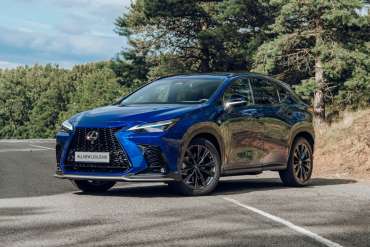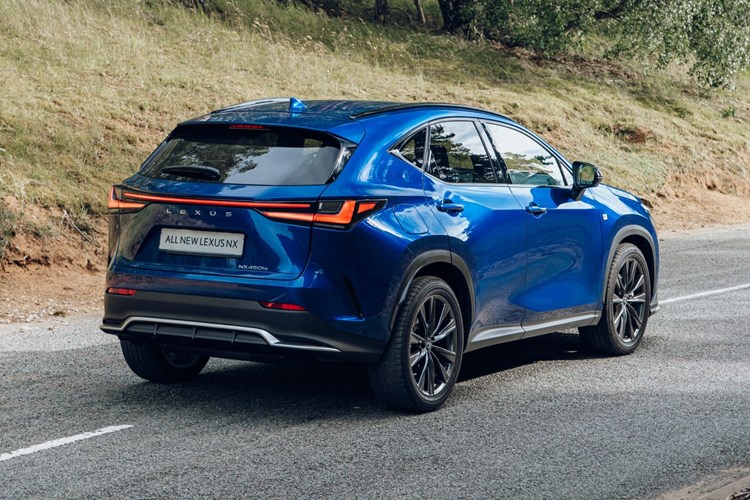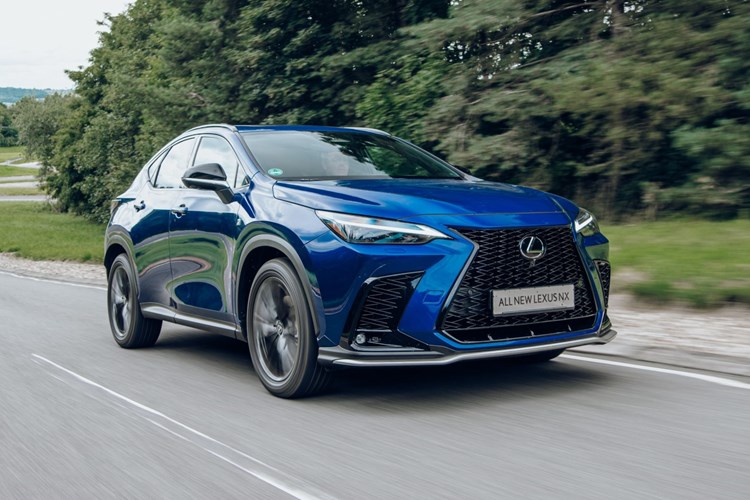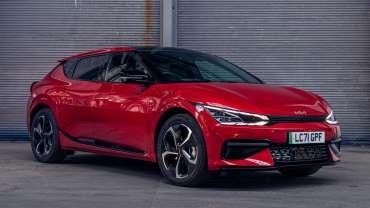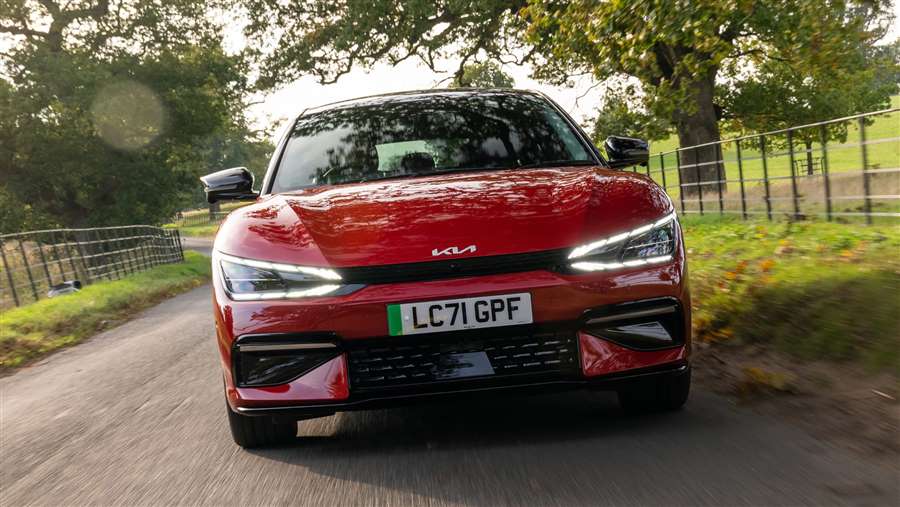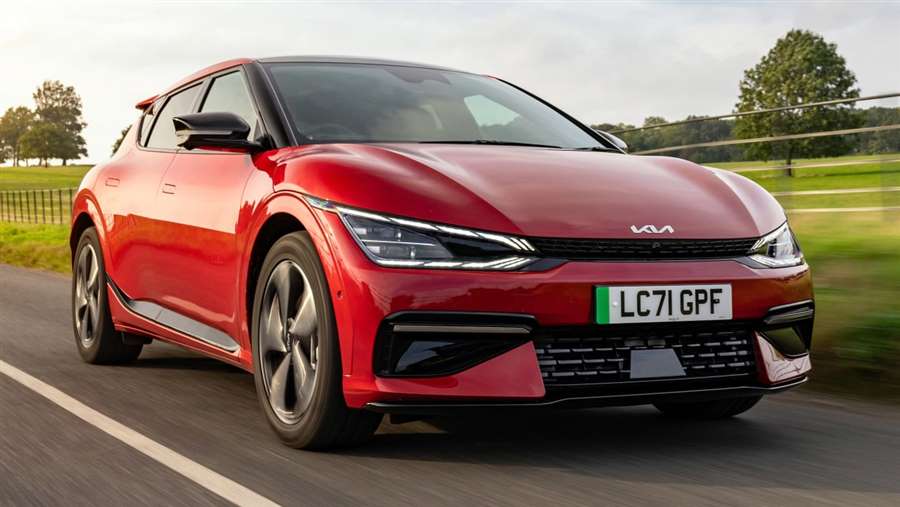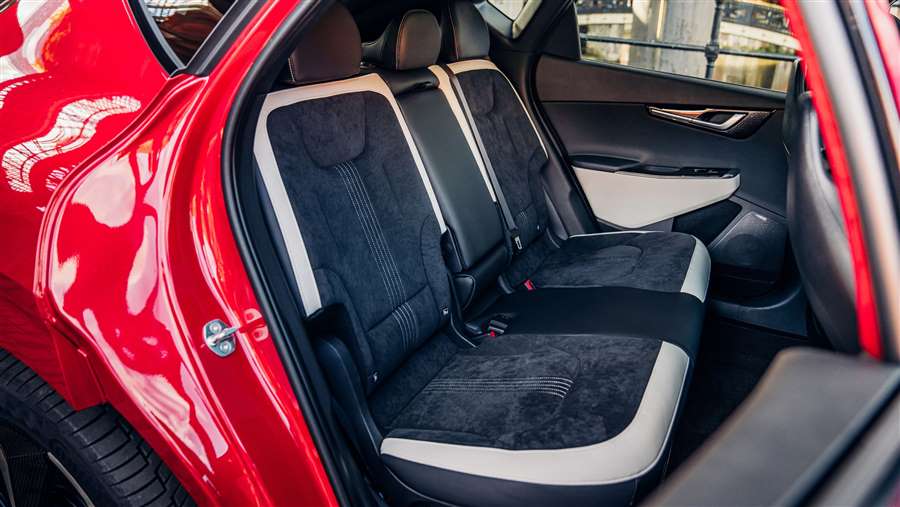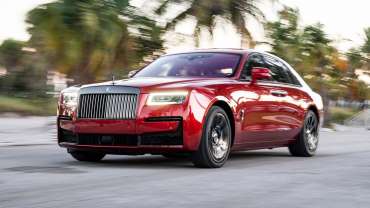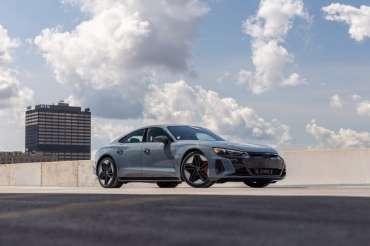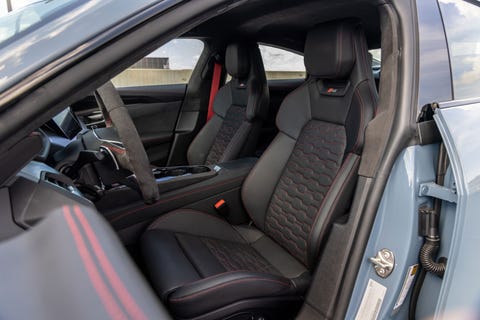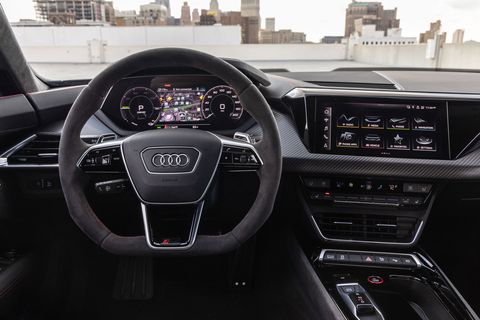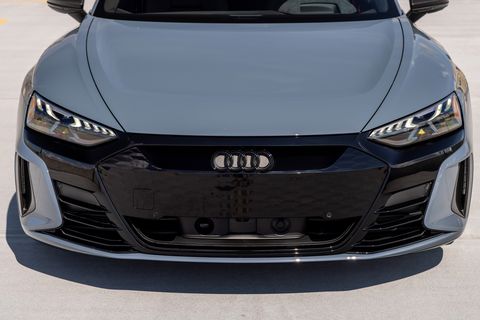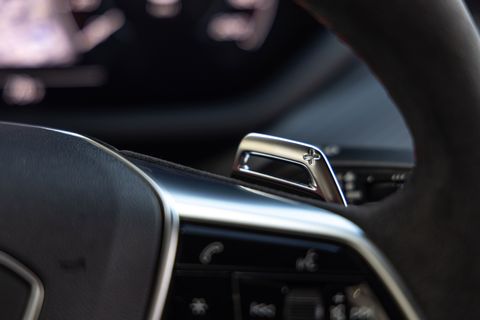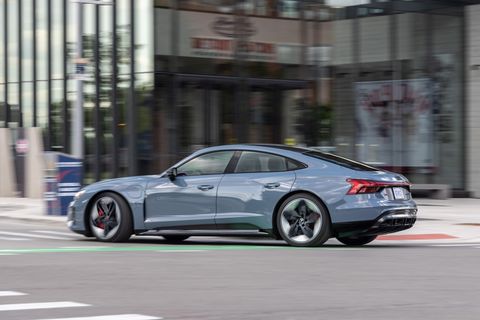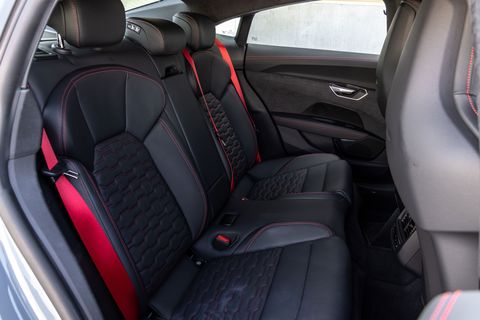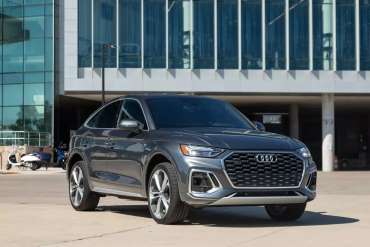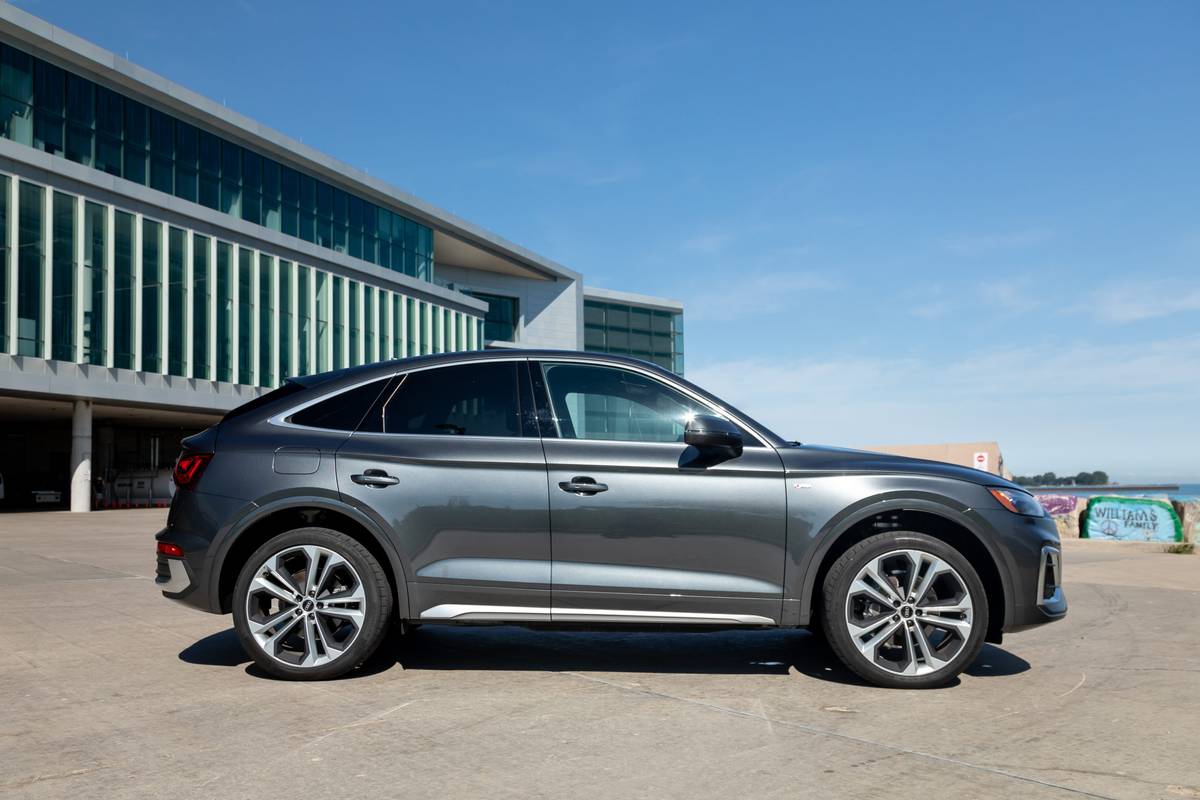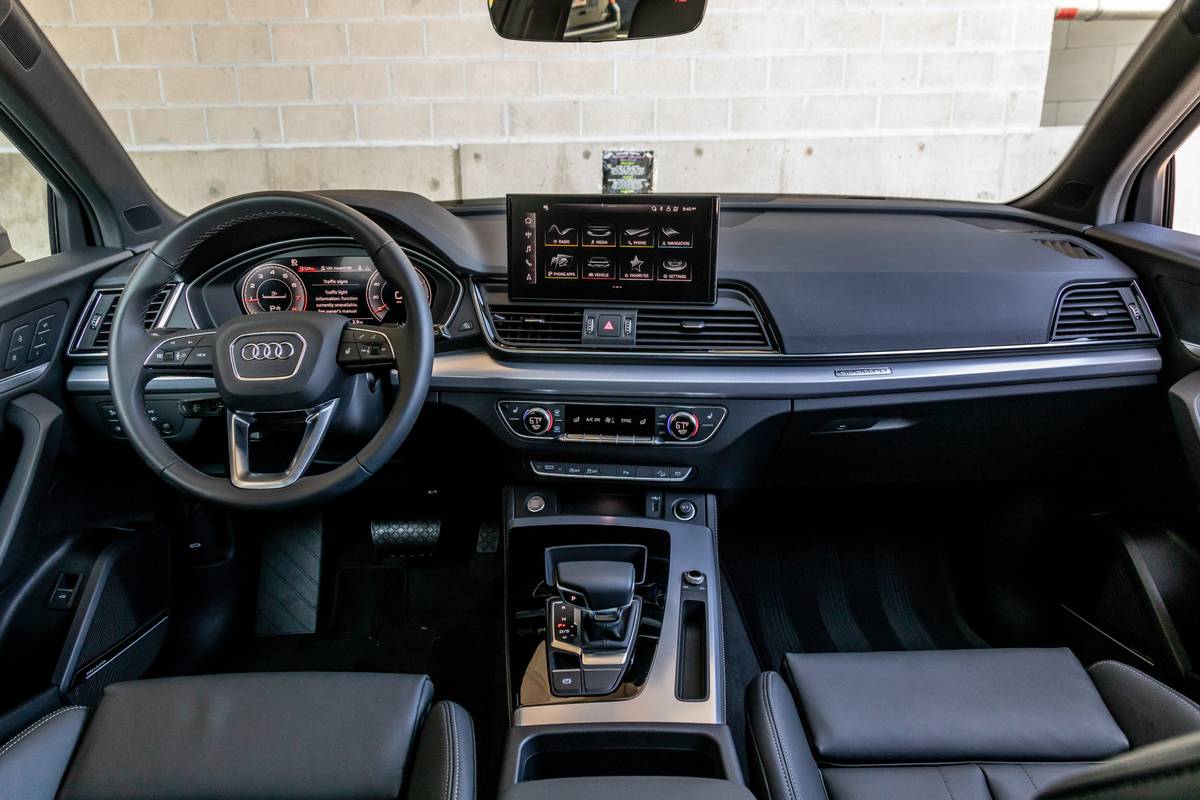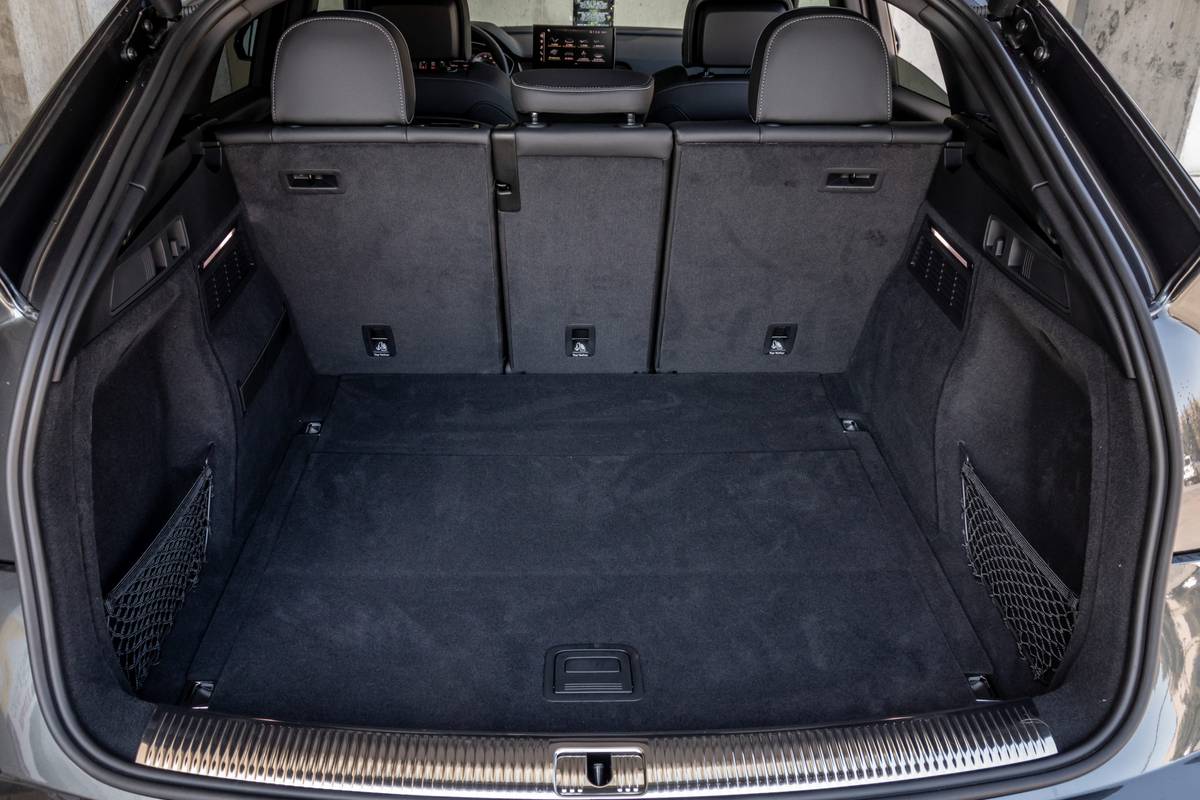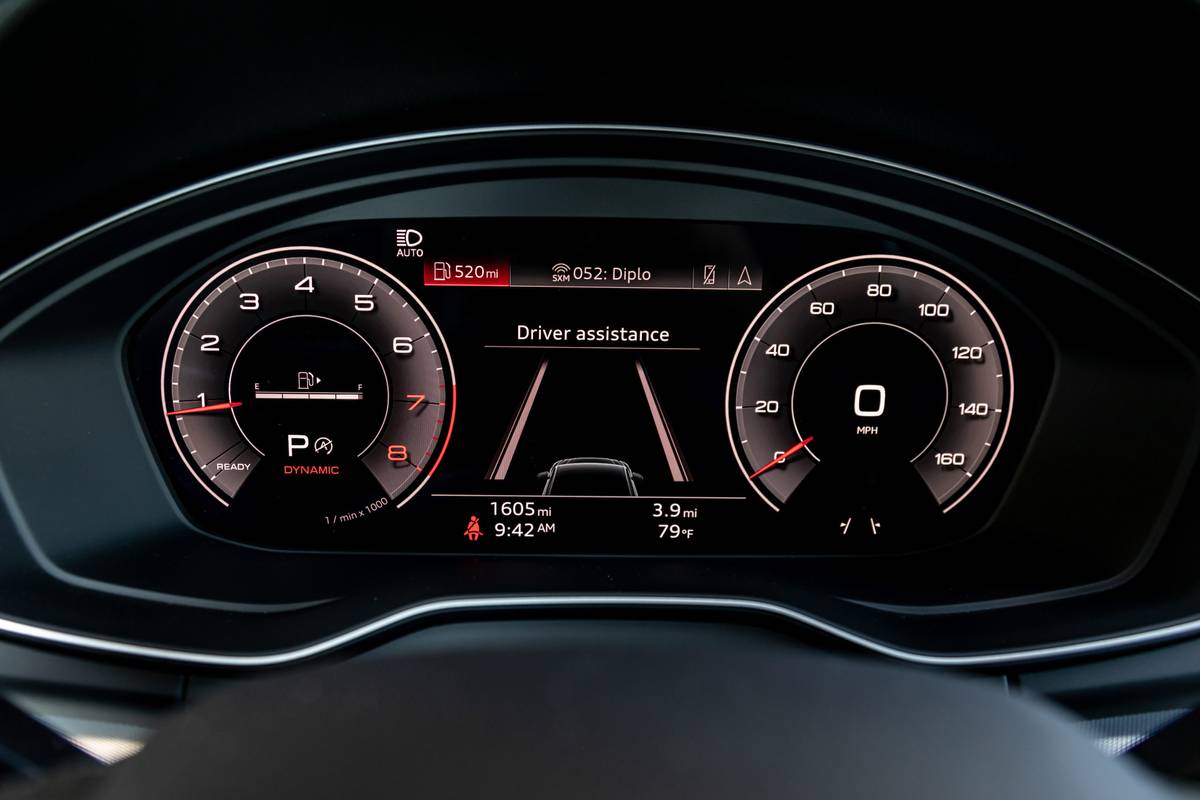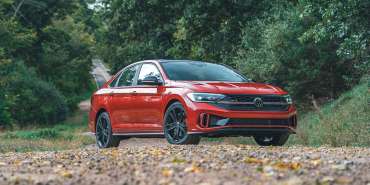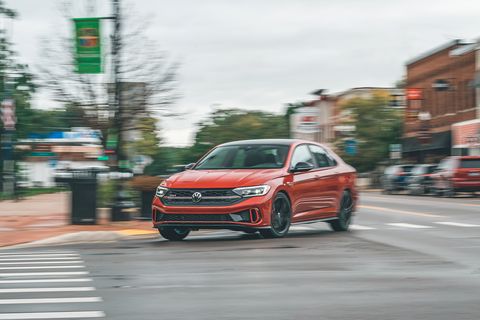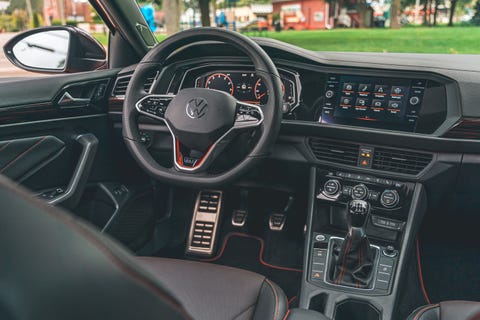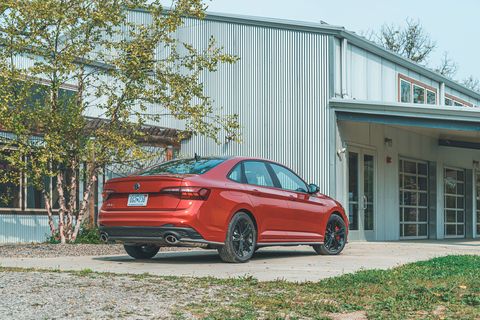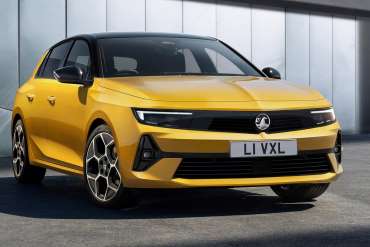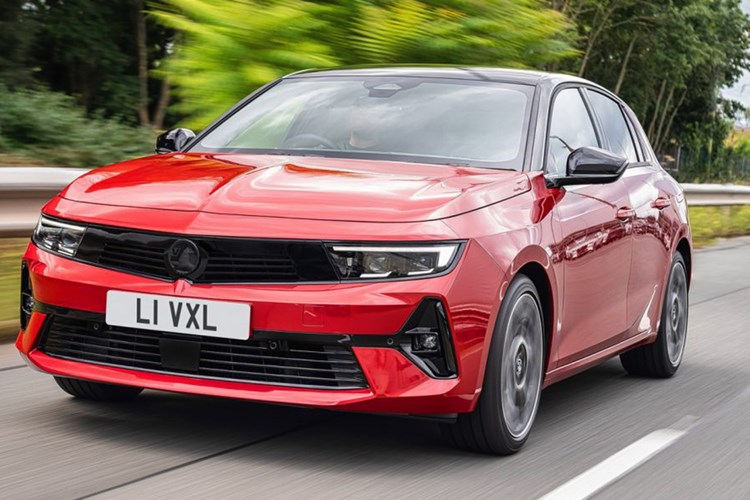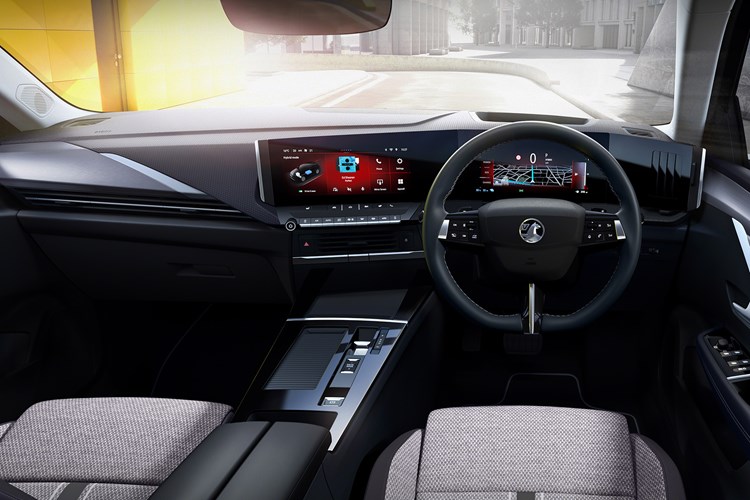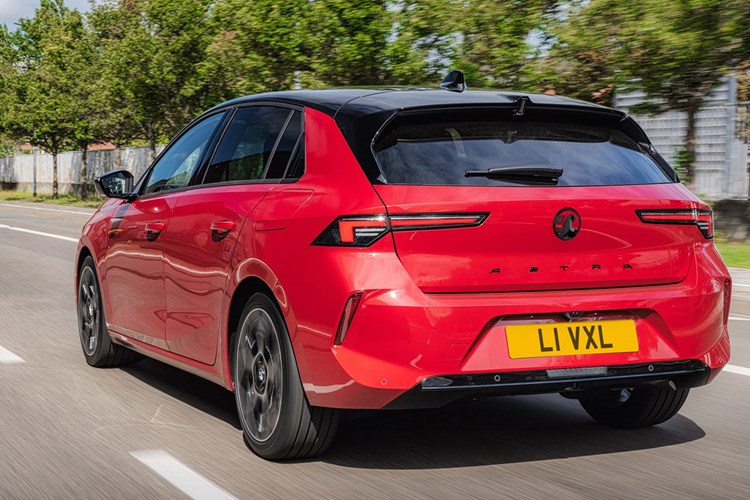The sound Audi should have used—and the one playing in my head right before hitting the accelerator—is the adrenaline-juicing click, click, click of a roller coaster on an upward climb. Flooring an e-tron GT produces the same lung-flattening rush of acceleration as a coaster in freefall.
The e-tron GT has a twin at the Porsche dealer—the e-tron shares its platform, 800-volt electrical architecture, front and rear electric motors, two-speed automatic transmission at the rear axle, air springs, and all-wheel steering with the Porsche Taycan. While the Taycan offers a single-motor, rear-wheel-drive setup as well as the dual-motor-driven AWD 4S, Turbo, Turbo S, and Cross Turismo, at least for now, the all-wheel-drive GT comes two ways: the 522-hp e-tron GT and the 637-hp RS e-tron GT. Accessing all of those horses requires launch control, and then you only get the power for 2.5 seconds.
The e-tron GT and RS's range figures will likely mean more to buyers. Per the EPA, the GT is good for 238 miles and the RS is rated at 232. Our testing of the RS revealed 240 miles of range, with our example averaging 71 MPGe overall and 83 MPGe on our 75-mph highway test, the latter result just beating its combined federal rating by 1 MPGe. Again, those are decent figures, but not the kind that leads to bragging among big-dollar EVs, especially if the conversation turns to Teslas.
On the road, the RS GT tours grandly. It hums and hauls so smoothly that the big numbers on the speedometer readout might come as a surprise. The low, hefty weight of electric cars—our RS test car tipped the scales at 5171 pounds—works in their favor when it comes to stable cornering, and 590 electric horses are more than enough to reshape your eyeballs. The GT's biggest challenges come from not having the longest range and not being the quickest or flashiest thrill ride in the park.
Audi gets points for using the steering-wheel paddles to control regenerative braking. It's just the sort of setting you might want to change on the fly, say, heading down a steep hill or coasting along in highway traffic, and being able to adjust it without having to dive into a settings menu is smart. The middle setting will feel the most familiar to gas-engine aficionados, and the max regen is almost but not quite aggressive enough to allow for one-pedal driving. The RS offers rear-wheel steering as an option. When fitted, the rear wheels also turn in phase with the fronts to improve high-speed stability; below 30 mph, the rears turn opposite to tighten maneuverability. Steering efforts are light, almost too light at slow speeds if the car is equipped with optional Power Steering Plus, which just boosts the steering assist to feathery at low speed. But once you get used to it, you'll be flipping tight U-turns just for the fun of it.
Audi tilts the GT's controls toward the driver, and everything you need is within easy reach. EVs have conditioned us to expect tech-focused or even minimalist interiors. The GT has a crisp digital display in front of the driver and a 10.1-inch touchscreen in the middle of the instrument panel, but there are—gasp—buttons for the climate control.
Sizewise, the e-tron is about same length as an A7, but it's dramatically lower and wider. The wide rear end and taillights look particularly great, but in front, the wide crossbar through the grille visually weighs down the front end. Overall, the e-tron GT reads elegant and muscular. It's not a game changer coming after the Taycan or even the still-powerful grandfather of the segment, the Model S, but it's quite a ride.
(https://www.caranddriver.com/reviews/a35834678/2022-audi-rs-e-tron-gt-us-drive/)


